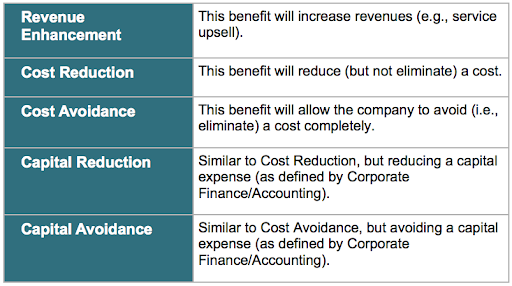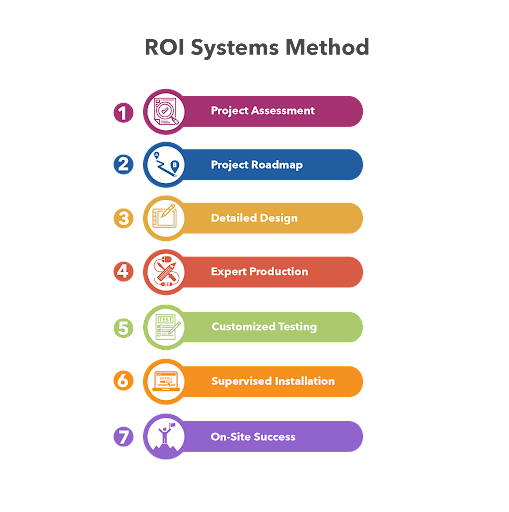How to Calculate Return On Investment For Software Development
If you are planning to create a SaaS application or any other software for your business or have already launched your application, then first of all you will need to find out how much income you have received using the application and calculate the return on investment (ROI).
This article will help you figure out how to calculate the planned return on an IT project. We believe that only by determining the projected return on the project, you can understand how much it would be appropriate to spend on it. It is noteworthy that when calculating the return on investment, there is nothing specific, this method is suitable for any business.
The key idea that we want to convey is that for IT projects it is important not how expensive and cheap it is, but how efficiently you spent your budget.
Does It Make Sense to Measure ROI for Software Development
ROI in software development stands for Return on Investment. It's like measuring how much money you make compared to how much you spend on a software project. It tells you if the project is worth it or not. If you earn more than you spend, it's a good ROI.
Investment is understood as a contribution directly to the business: the cost of employee salaries, premises rental, marketing, the purchase of raw materials and materials, the purchase of software and services necessary for work.
The ROI calculation is necessary when you want to know how much money invested in a team, project or advertising campaign returns. This indicator is often used to calculate the payback of different types of advertising: contextual or banner, target in social networks.

For example, let's say we're in the shampoo business and want to know how effective our Facebook ad campaign was. In this case, the calculation of ROI will help us: we will find out how much the investment in advertising paid off along with spending on manufacturing shampoos.
Importance of Measuring ROI in Software Development
Calculating ROI helps to make management decisions, avoid costly mistakes, and determine the profitability of projects. Therefore, ROI is one of the main formulas with which you can form the direction of business development and decide where to move the company so as not to burn out.
Differentiating ROI, ROMI, and ROAS in Software Development
ROI is often confused with ROMI, ROMI with ROAS, and vice versa. Let's see what are the main differences between these indicators.
ROI (Return on Investment) is the payback ratio or return on all investments. This indicator helps to determine how profitable the whole project is, taking into account all the investments in it. To determine the ROI, you need to consider all the project costs and the income from it.
ROMI (Return on Marketing Investment) is a return on marketing investment. ROMI is most often confused with ROI. If ROI helps determine the return on all investments, then ROMI only considers marketing costs: advertising budget, printing, and billboard rental, but does not include the cost of producing goods.
ROAS (Return on Advertising Spend) is the rate of return on advertising costs. ROAS only takes into account the marketing spend for a specific advertising campaign. The main task of the calculation is to determine whether the company makes a profit from the advertising tools used.
The ROI Formula for Software Development
Return on investment is typically calculated by taking the actual or estimated income from a project and subtracting the actual or estimated costs. The result is the total profit that a project has generated or is expected to generate, and it is then divided by the costs.
The ROI formula is typically written as:
ROI = (Net Profit / Cost of Investment) x 100
In project management, the formula is written similarly but with slightly different terms:
ROI = [(Financial Value - Project Cost) / Project Cost] x 100
The last one was used to plan one of our most successful SaaS projects.
Example of Calculating ROI for an IT Project
Suppose a company sells services for 455,000 USD per year. Let's calculate the profitability of CRM implementation. Let's assume that automation will increase employee efficiency and gross income by 10%.
The initial data is as follows:
The total cost of the project, including development, implementation, support, payment for the platform - 36,000 USD;
Return on the project - 10% increase in gross income from 455,000 USD - this is 45,500 USD.
We substitute the data in the formula:
R = (45,500 USD / 36,000 USD) * 100% = 1.25.
This means that the company will receive 1.25 USD of additional income for every dollar invested.
It is fair to add that each project may have its own nuances and force majeure. This is an average formula, and it must be adjusted for each project.
ROI Calculation for SaaS Product Development
AppsFlyer and Facebook conducted an analysis last year to calculate the average ROI of an app. They analyzed 3,800 apps that generated $2.4 billion in total revenue.

Average Global MobileApp Revenue Per User
Mobile gaming ROI per user was the lowest at $1.70 per user, while shopping app revenue averaged $13.88 per user. The average revenue for in-app purchases may seem high, but most popular games are free to play and generate revenue using an in-app purchase model. In these games, most users pay nothing and continue to play for free. On the other hand, some users can spend up to $100 on exclusive in-game items.
The average travel mobile app ROI was $29.42 per user, which may seem much higher, but we have to factor in 180 days. If you move to 90 days, then the average drops to $14.71, which is still higher than shopping and gaming apps. Let's take a look at the detailed steps and holistic process of calculating ROI for a mobile app.
Step 1 - Define your goals
The most important step is to know what business goal you want to achieve with the app. You must define measurable short-term team and long-term goals before choosing the design and development phase.
Once you have defined the strategy and goals, you need to translate it into actionable steps and communicate with the design and development teams. Mobile app developers need to be well aware of the business goals and KPIs at all stages of development. This is important for the efficient use of funds.
Do you want to develop a unique SaaS application for your business?
Step 2 - Calculate the total app development cost
You must stay within your budget and not use excessive resources in the development process.
Costs should include:
- UX/UI development costs
- Software development costs
- Support and integration
- Testing costs and performance improvements
- Final launch deployment cost
- Long term costs
Once the software is developed, there will be small regular maintenance costs and overall application improvement costs that you can add to the long-term costs.
Step 3 - Define a Measurable KPI
Key Performance Indicators (KPIs) vary from one organization to another. Some may see customer loyalty and customer retention rate as a KPI. While some may consider customer engagement, average revenue per user as a KPI.
If your goal is customer engagement, you should focus more on attracting new customers by keeping them in your app. Hence, you are comparing development costs to customer acquisition efforts.
Step 4 - Weigh Your KPI With Costs
Measuring KPIs versus costs is the last but most important step in calculating mobile app revenue. When you have measurable KPIs with results, you can measure the overall value of your app. Compare KPI results with development costs and determine whether your results are better or less.
It is recommended to estimate the software's lifetime by comparing costs with KPIs. You can also consider how much time you want to spend on app maintenance. You can calculate the ROI of mobile app development by dividing the Net Present Value (NPV advantages)* by the NPV costs.
*Net present value (NPV) is the difference between the present value of cash inflows and the present value of cash outflows over a period of time.
Summing Up Software Development ROI
Software development ROI calculation requires a holistic view. Many companies are investing in mobile app development as the world becomes digital. Calculating the ROI of a SaaS app is not as easy as solving a mathematical formula. The correct way to calculate requires a holistic view so that you can understand the impact of each development step on your business.
If you are already planning the development of a new SaaS product, but without measuring ROI for software development, we can help you calculate the Proof of Concept and plan the right development without losing your investment.
